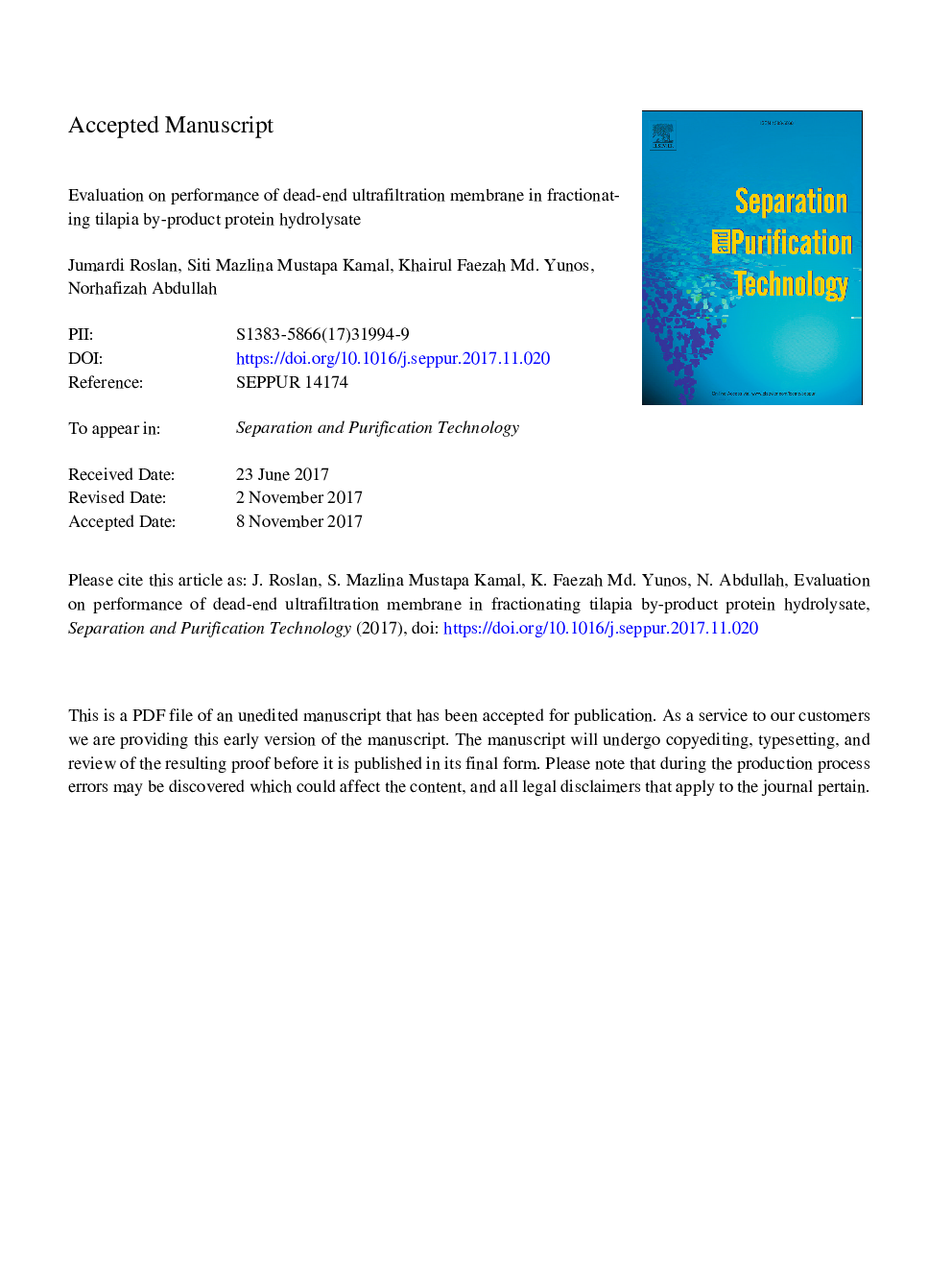| Article ID | Journal | Published Year | Pages | File Type |
|---|---|---|---|---|
| 7043998 | Separation and Purification Technology | 2018 | 34 Pages |
Abstract
Conversion of tilapia by-products through enzymatic hydrolysis is a promising alternative to produce a fish protein hydrolysate (FPH). Tilapia by-product (TB) protein hydrolysate consists of peptide mixtures in various sizes. Recovery of small-sized peptides is increasingly becoming a priority due to their special characteristics, which can provide an excellent physiological functions. Ultrafiltration (UF) membrane is an effective and suitable tool for fractionating small size peptides in a large scale. The objective of this study was to evaluate the membrane performance based on the permeate flux and peptide transmission. The fractionation of TB protein hydrolysate was performed through a dead-end UF membrane (10 and 5â¯kDa) with the effect of stirring speed (0-600â¯rpm), pH (3, 5, 7, 8 and 9) and salt concentration (NaCl; 0â¯M, 0.2â¯M, 0.4â¯M, and 0.6â¯M) at varies pressure (1.0, 1.5, 2.0, 2.5 and 3.0â¯bar). It was found that the transmembrane pressure of 2.5â¯bar, stirring speed of 600â¯rpm, pH 8 and without addition of NaCl turned out to be the best parameters which gave permeate flux of 53 L/m2h (10â¯kDa) and 27 L/m2h (5 kDa), while for the peptide transmission, the value of 87.33% (10â¯kDa) and 36.11% (5kDa) was obtained. This study indicates that by adding salt, it has lowered the permeate flux and peptide transmission. Finally, through a well-controlled of operating and physicochemical parameters, it was possible to produce peptides with sizes lower than 1000â¯Da.
Related Topics
Physical Sciences and Engineering
Chemical Engineering
Filtration and Separation
Authors
Jumardi Roslan, Siti Mazlina Mustapa Kamal, Khairul Faezah Md. Yunos, Norhafizah Abdullah,
